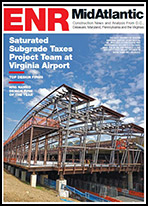 |
| Augusta Mayor Bob Young says design-build gives his city more control over the final product. The city is using the project delivery method on a $60-million wastewater treatment plant. |
Design-build is making headway in delivering water and wastewater projects, as public owners and lawmakers become more open to integrated delivery across the board. But speakers and more than 300 attendees at the Design-Build Institute of Americas annual water and wastewater conference in San Diego Feb. 4-6 cited continuing challenges as well as opportunities.
"I believe were at a critical time in project delivery," said Mayor Bob Young of Augusta, Ga. said in his Feb. 5 keynote address. "Design-build is here, its matured, and its got a bright future." Augusta selected MWH as design-builder for its largest-ever public works projecta $55-million water treatment plant that is now about 60% complete. Despite familiar concerns that design-build limits owner control, Young finds that "the design-build process actually gives us more control over the final product and gives us continuous owner input."
But design-build still faces significant hurdles. "The key challenge is to have it as an option, and theres a steep learning curve to educate the people who will make the final decision that design-build is a viable option," Young said. He also warns that owners "must resist the urge to low-bid these projects . . . youve got to educate our customers about best-value delivery."
|
The "O" in DBOoperate"is a lightning rod," said James J. Binder, president of Alternative Resources Inc., Concord, Mass. Binder, who served as a consultant on Stockton, Calif.s proposal to privatize its water services, said that some people initially believed that the city was planning to "sell" its facilities. "Educationpeople understanding what it really meanstakes a long time," Binder said.
Stocktons plans hit a legal snag in December, when a state judge told the city to dissolve its $600-million contract with OMI/Thames Water Stockton Water, ruling that the operations and maintenance service agreement required environmental review (ENR 12/22/03 p. 18).
Stocktons troubles notwithstanding, some owners planning large-scale projects remain enthusiastic design-build advocates. "It didnt take us long to realize that if you add the "O" to the "D-B," it gives you some added benefits," said Michael Gritzuk, director of Phoenix Water Services. A team led by American Water Services Inc., Black & Veatch, and McCarthy Building Cos. is developing the $336-million first phase of the citys Lake Pleasant Water Treatment Plant, which will be Arizonas first design-build operate project.
A national survey indicates that design-build is "one of the hottest topics right now in state legislatures across the country," said S. William William Quatman, an attorney based at the Kansas City, Mo. office of Shugart Thomson & Kilroy. In 2003 lawmakers in 35 states passed over half of 127 bills introduced, Quartman says, well above the national average for all legislation. About one-quarter cover highways and roads and one fifth comprise broad enabling legislation. Enabling legislation for design-build water or wastewater projects is now on the books in a dozen states, although some laws apply to specific agencies or projects.
One bill to watch this year is a sweeping proposal by California Assemblyman. Todd Spitzer (R) to authorize design-build-operate delivery for public agencies. In all, 43 now permit some form of design-build, Quatman reports.
(Photo courtesy of DBIA)





